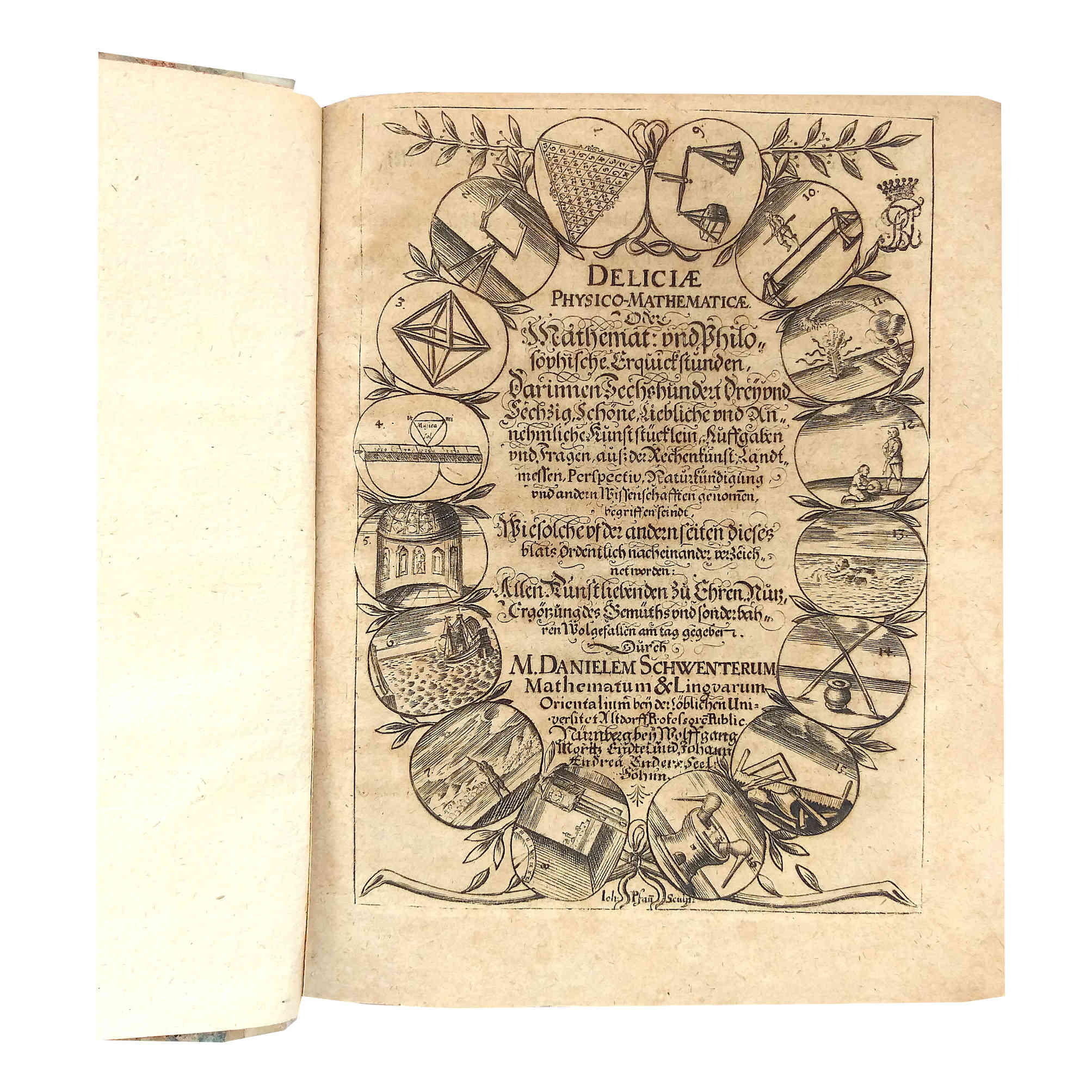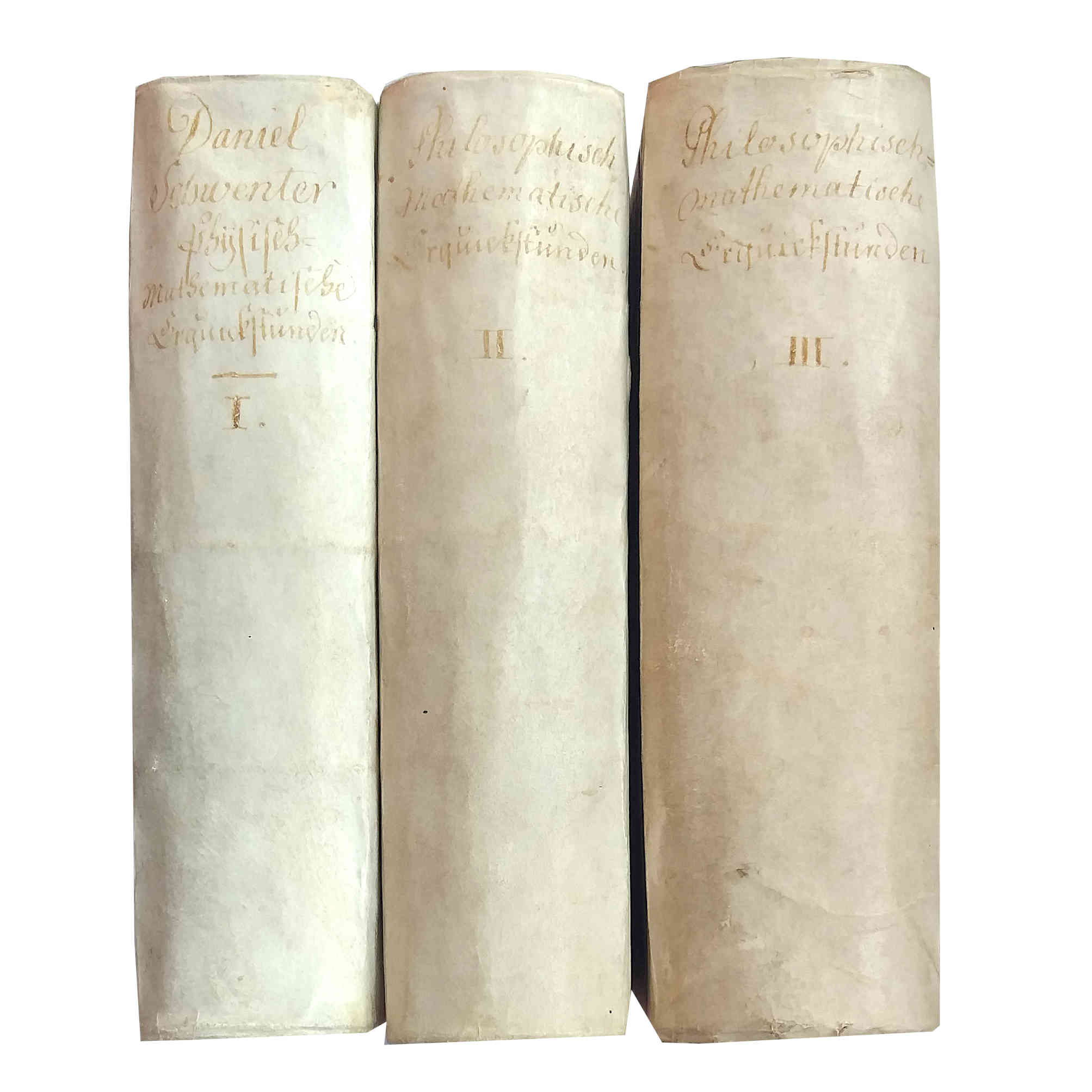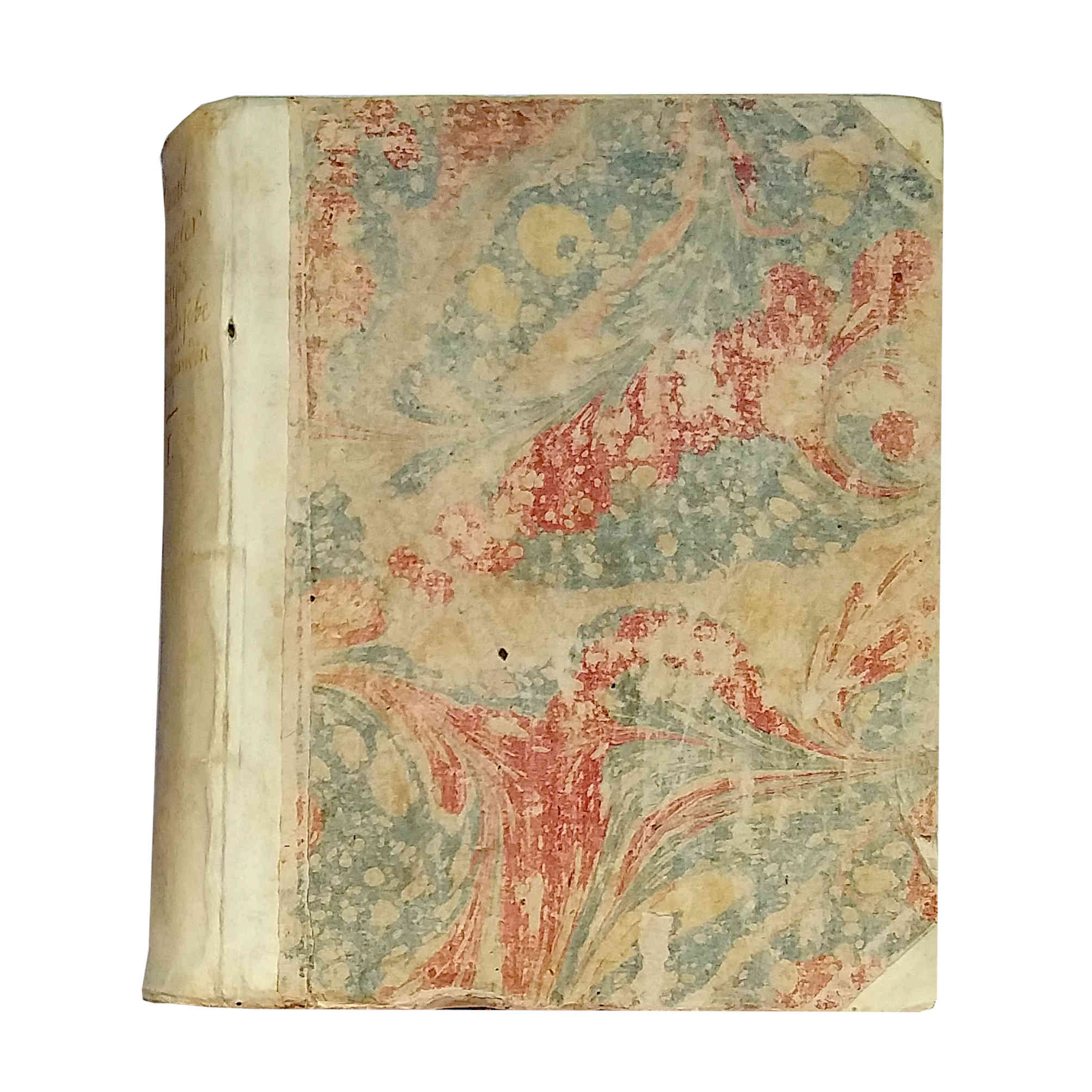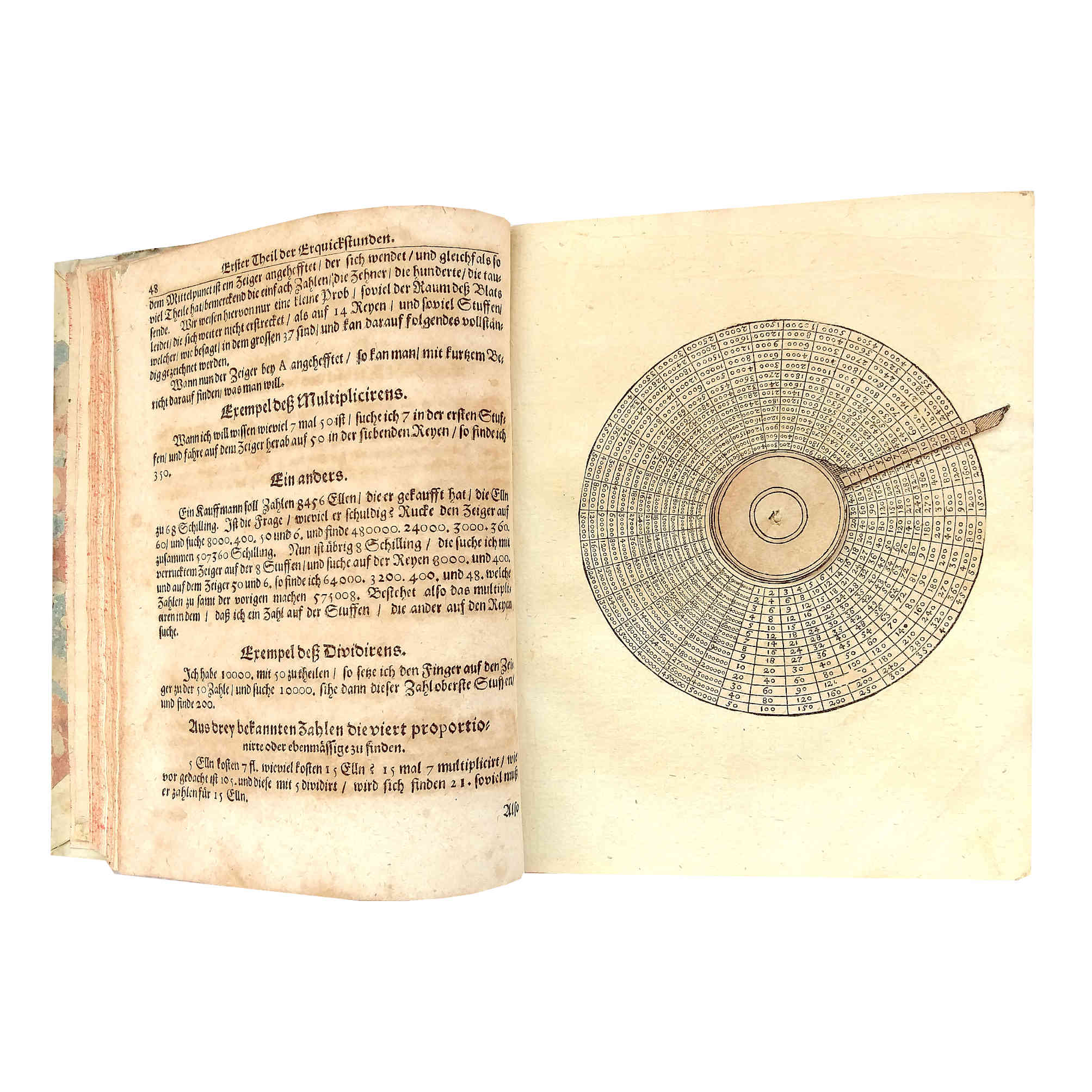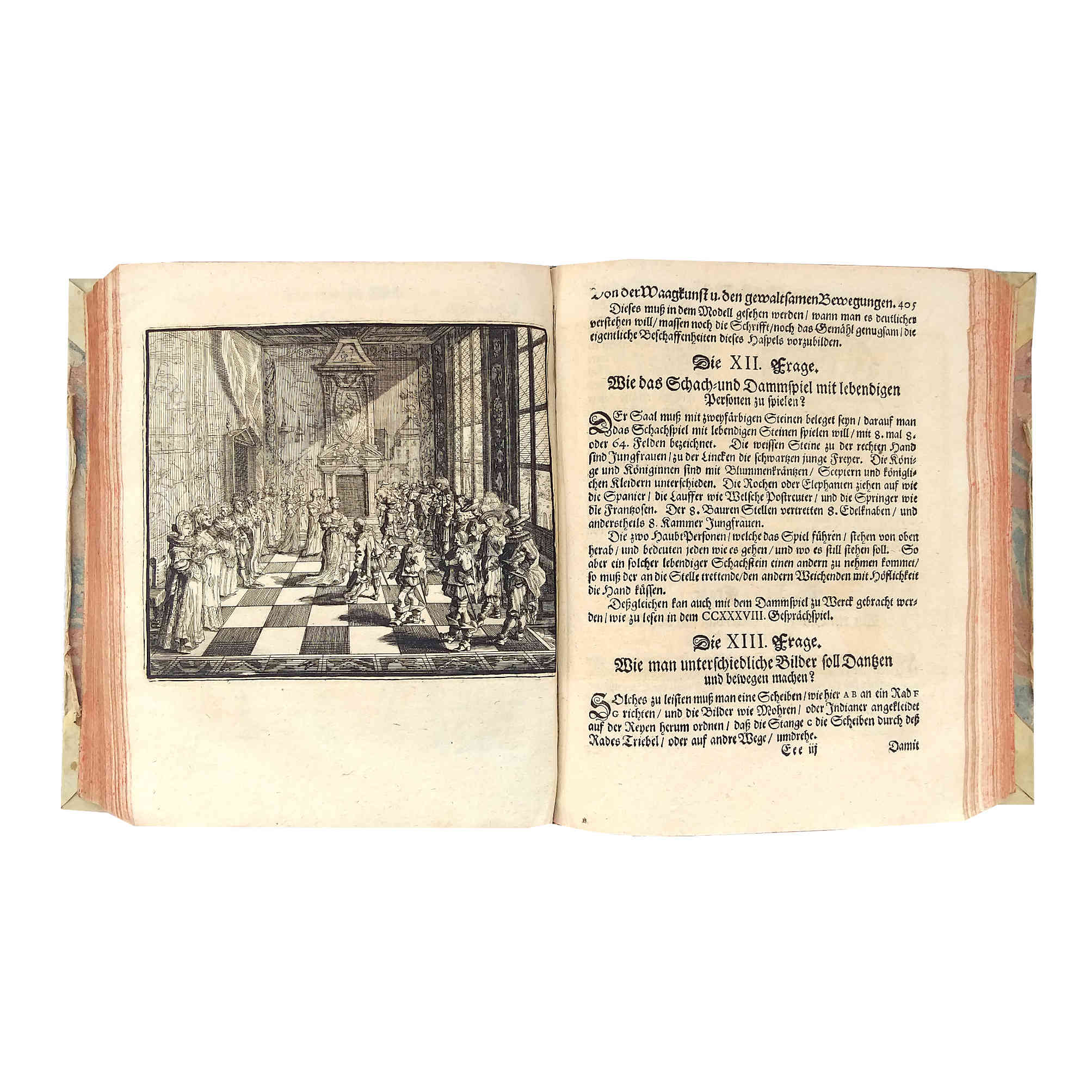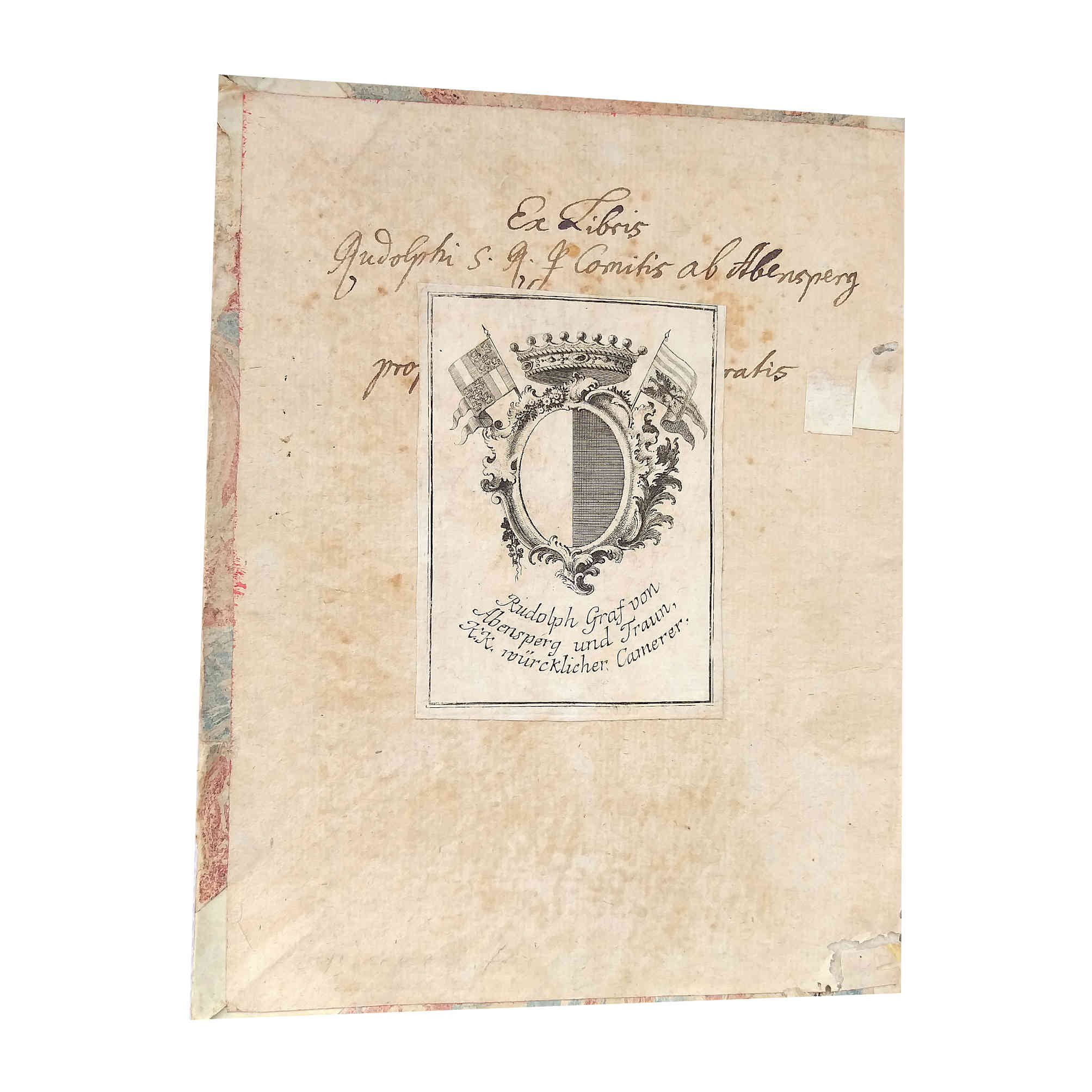Schwenter’s and Harsdörffer’s recreational mathematics, with all plates incl. the 3 volvelles, 1677-92
€ 1.400
D. Schwenter; G. P. Harsdörffer: Deliciae Physico-Mathematicae. 3 vol. With 3 engraved pictorial titles, 7 further plates, where of 5 engraved and 2 wood-cuts, 4 of them folded and 3 with volvelles. Nuremberg, [1677], 1677 and 1692
Daniel Schwenter; Georg Philipp Harsdörffer: Deliciae Physico-Mathematicae. Mathemat: und Philosophische Erquickstunden, Darinnen Sechshundert Dreyund Sechzig, Schöne, Lieblichze und Annehmliche Kunststücklein, Aufgaben und Fragen, aus der Rechenkunst, Landtmessen, Perspectiv, Naturkündigung und andern Wissenschafften genomen, begriffen seindt, (…) 3 volumes. With 3 copper engraved pictorial titles, 7 further plates, where of 5 copper engraved and 2 wood-cuts, 4 of them folded and 3 with volvelles, as well as numerous, in parts full-paged wood-cut text illustrations. Nuremberg: Endter, s. a. [1677], 1677 and 1692.
4to. [12] 574; [24] 584 [16 (index)]; [16] 659 [1] [37 (index)] pages. Copper engraving, etching, woodcut and letterpress, in contemporary half vellum bindings over marbled cardboards with hand-written calligraphic title on spine, all edges coloured red.
Schwenter's and Harsdörffer's profusely illustrated compendium on recreational mathematics, present set of noble Austrian provenance consisting of all 3 volumes with a complete run of all copper engraved and woodcut plates and also including the 3 moveables.
Content, Authors: The »Deliciae Physico-Mathematicae«, a legendary work of recreational mathematics in the baroque fashion, was originally published in one posthumous volume in 1636 compiled by mathematician and orientalist Daniel Schwenter and edited by Georg Harsdörffer, together with Bernegger (the translator of Galileo) a disciple of the former. In 1651 and 1653 Harsdörffer added two further parts. Parts 1 and 2 were reprinted in 1677 and part 3 in 1692, as present.
„Schott said that the Physico-Mathematical Delights of Daniel Schwenter (...) presented many most entertaining machines, hydraulic and pneumatic. It has a description and picture which are said to be the first of a fountain pen [i.e. vol. 1, p. 520. The pen is constructed from a goose-quill and contains a little receptacle for the ink, note by WoP]. The tricks are taken partly from previous authors such as Nicolaus Taurellus and Cardan, or, more recently, Galileo" (Thorndike). "The many-sided Harsdörffer meant to provide here not only a textbook but also a book for home and family which would supply a great deal of scholarly entertainment" (Faber du Faur). Among the highlights for the history of science are: The first application of chain-fractions (according to Cantor). Huygens was stimulated to formulate his theory of chain-fractions by it. Vol. 2 contains a chapter on different optical apparatus with illustrations of a magic lantern, etc.
Plates: Present set contains a complete run of all 10 copper engraved and woodcut plates, i.e. 3 copper engraved pictorial titles, for vol. 1 after an etching signed „Joh. Pfau“ and for vol. 3 signed „Andr. Khol“, 7 further plates, (3 in vol. 2, 4 in vol. 3), where of 5 copper engraved and 2 wood-cuts, 4 of them folded and 3 with volvelles (vol. 2, leaves G1 and Sss2, vol. 3, after leaf Q4, the two latter loosely inserted and bound in separately resp., untouched by the book-binder).
Provenance: Rudolph Graf von Abensperg-Traun (1872-1954), member of an Austrian noble family, with his engraved pictorial ex-libris incorporating the family's coat of arms as well as hand-written owner's remarks on the front paste-downs and his owner's stamps on the engraved title (vol. 1) printed title pages. (vol. 2 and 3)
Condition: Vol. 1, sheet Gg (pp. 225-232); vol. 2, pp. 165-170, 183-216, 325-334, 345-362, 385-414, 561-578 and pp. [17-38] of the index missing; vol. 2, pp. 323f. with faults; some pages heavily time-stained.
Rarity, Holdings: Hard to find in trade, as of Dec. 23 no copy of none of the volumes of the Endter reprint is available; particularly scarce with all plates and moreover the 3 moveables, though still a collectable set, despite the missing pages. RBH quotes only 3 copies ever auctioned.
Reference: VD17 32:691594V (vol. 1), VD17 3:301454C (vol. 2) and VD17 39:118097K (vol. 3, for the 1st imprint of 1653); Dünnhaupt, G. Bibliographisches Handbuch der Barockliteratur, 2.I.3, 2.II.2 und 2.III.2; Jantz, H. S.: German Baroque literature, 2299. Faber du Faur, C. v. Yale Collection of German Literature. German Baroque literature, p. 508 (note); Poggendorff, J. C.: Biographisch-literarisches Handwörterbuch zur Geschichte der exakten Wissenschaften, vol. II, column 878. Smith, D.E. History of Mathmatics, vol. I, page 421; Thorndike, History of Magic and Experimental Science, vol. VII, p. 54; Zollinger, M. Bibliographie der Spielbücher, vol. 1, no. 300 (for 1st ed. of vol. 3).

